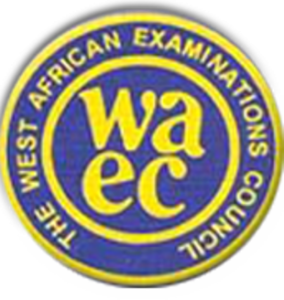 With free WAEC previous questions, you can ace your exams. Using previous exam questions allows you to become more comfortable with the exam format, identify your strengths and weaknesses, learn crucial ideas, improve time management, and raise your confidence. Access previous questions from various subjects to properly prepare for and excel in the WAEC. Do you want to get a good score and get into your dream university? You’ve come to the right place!
With free WAEC previous questions, you can ace your exams. Using previous exam questions allows you to become more comfortable with the exam format, identify your strengths and weaknesses, learn crucial ideas, improve time management, and raise your confidence. Access previous questions from various subjects to properly prepare for and excel in the WAEC. Do you want to get a good score and get into your dream university? You’ve come to the right place!
WAEC Health Science Questions 2022.
PAPER 1
1. (a) What is food preservation?
(b) Explain the following methods of food preservation: (i) Air drying; (ii) Vacuum drying; (iii) Pasteurization; (iv) Salting.
(c) Give one example of each of the food best preserved by the methods explained above.
(d) (i) List four ways by which food could be kept in the home Under hygienic conditions.
(ii) Name two pests that could contaminate human food.
2. (a) (i) Draw and label the forelimb of humans.
(ii) Mention three injuries that could occur at the forelimb.
(b) Name five structures of the male reproductive system.
(c) (i) What are vitamins?
(ii) Mention one deficiency disease each caused by a lack of Vitamins A and D.
WAEC Health Education Practical
(a) (i) Labels I – head of the humerus, II – humerus, III – radius, IV – phalanges, V – metacarpal, VI – carpal, VII- ulna, VIII – olecranon process
NB: Spellings must be correct to score.
(ii) Injuries that could occur at the forelimb
– fracture
– dislocation
– sprain
– strain
– burn/scald
– bruise/wound
(b) Structures of the male reproductive system
– penis/erectile tissue
– scrotum
– cowper’s gland
– testis
– seminal vesicle
– sperm duct/vas deferens
– epididymis
– prostate gland.
– urethra
NB: Spellings must be correct to score.
(c) (i) Vitamins Vitamins are essential chemical/organic compounds in the diet needed in small quantity for healthy growth and development of the body
(ii) Deficiency Diseases caused by vitamin A and D
Vitamin A
– keratomalacia/Dry skin.
– night blindness
– xerophthalmia.
Vitamin D
– osteomalacia/soft bones
– rickets.
3. (a) (i) What is posture?
(ii) State three causes of postural defects
(b) List three defects of the foot
(c) State two corrective measures for postural defects.
4. (a) List two natural sources of water.
(b) State three general uses of water by humans.
(c) Name the international health agencies/organizations associated with the following functions:
(i) standardization of drugs for international use;
(ii) performing first aid activities and training personnel in first aid;
(iii) provision of recreational facilities and equipment for school children;
(iv) providing information on the outbreak of epidemics;
(v) rehabilitation of victims of wars, floods, or drought.
5. (a) Mention the three-body forms in humans.
(b) State two features of each body form mentioned in (a) above.
(c) State one factor necessary for the maintenance of health.
- Read Also!!
- WAEC Animal Husbandry Questions and Answers
- WAEC Visual Arts Questions and Answers
- WAEC Geography Questions and Answers
- WAEC Commerce Questions and Answers Objective and Theory
- WAEC Civic Education Questions and Answers
PAPER 2
1. (a) (i) What are enzymes?
(ii) State five characteristics of enzymes
(iii) Name two enzymes involved in carbohydrate digestion in the body
(b) Name the end-product of the digestion of
(i) carbohydrates;
(ii) proteins;
(iii) fats.
(c) State two uses each of the following classes of food:
(i) proteins;
(ii) vitamins.
(d) State two ways each in which the following substances are important
in the diet of humans:
(i) Roughage;
(ii) Water.
2. (a) Explain the following terms:
(i) shock;
(ii) fainting.
(b) (i) State three symptoms of shock
(ii) Outline the steps taken in the first aid treatment of shock victims.
(c) Explain the following terms:
(i) kyphosis;
(ii) scoliosis.
(d) Explain the following terms associated with bone injuries:
(i) dislocation;
(ii) sprain.
3. (a) (i) What is an endocrine gland?
(ii) State three functions of adrenalin.
(b) State three effects of each of the following conditions in humans:
(i) over-secretion of thyroxin;
(ii) under-secretion of thyroxin.
(c) (i) Write HIV in full.
(ii) Distinguish between HIV and AIDS.
(d) State two methods each by which the vectors of the following diseases can be controlled:
(i) onchocerciasis;
(ii) schistosomiasis;
(iii) guinea worm.

Leave a Reply